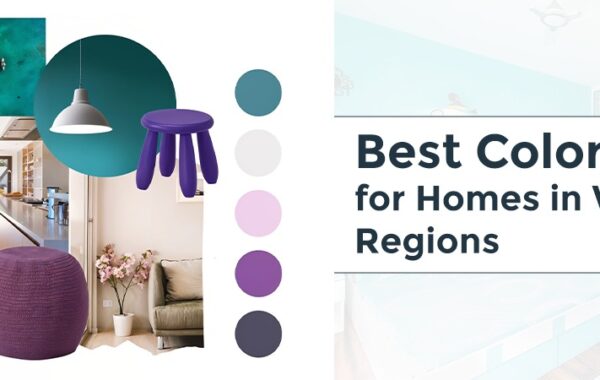1. Understanding Your Space
A. Assessing Your Needs and Lifestyle
Identifying Essential Functions of Each Room: List the primary functions each room serves. All will help to guide the design choices and also help in prioritize areas that need improvement.
Prioritize the Areas for Improvement: Focus on rooms that impact your daily life, like the living room or kitchen.
Evaluating Daily Routines for Effective Design Choices: Consider how you use each space. For instance, you might need a dedicated office area if you work from home.
B. Measuring Your Space
Importance of Measurements accuracy: Accurate measurements prevent costly mistakes and ensure furniture fits your space well.
Tools and Apps for Measure easily: Using tape, laser, or smartphone apps designed for measuring and creating floor plans helps efficiently.
Creating a Floor Plan for Design Ideas: Sketch the room layout, also including doors and windows, to visualize how furniture and decor will fit.
C. Setting a Realistic Budget
Determining the Overall Budget: Decide how much you can spend in total. This will help you allocate funds wisely.
Allocating Funds for Different Rooms or Projects: This includes break down of the budget by room or project, assigning more funds to high-impact areas.
Strategies to Save Money While Achieving Your Design Goals: Look for sales, use coupons, and consider DIY options to stretch your budget.
2. Smart Shopping Strategies for home
A. Finding Affordable Furnishings
Some Best Places for Budget-Friendly Furniture Shopping: For those looking to furnish their homes on a budget, visiting discount stores, outlet centers, and online retailers like Wayfair or IKEA can be incredibly helpful. If you’re in Jaipur, consulting the Best Interior Designer in Jaipur can provide valuable insights and guidance on selecting affordable yet stylish pieces.
Tips for Finding best Quality Second-Hand Items: Exploring thrift stores, garage sales, and online marketplaces for the best pre-loved furniture is really beneficial.
Understanding the Difference Between Investment Pieces and Trends: Investment in timeless pieces that will last, and opt for trendier, less expensive items.
B. Chasing Your Tale: Optimizing Your Utilization Of Online Marketplaces
Navigating Websites and Apps for Home Goods: You should visit sites like Facebook Marketplace, Craigslist, and Etsy for unique products.
Tips for Successful Online Shopping and Negotiations:
- Refuse tips.
- Never let your guard down.
- Seek detailed pictures.
- Bargain when you can.
How to Identify Reputable Sellers: Beware, first and foremost, of offers presented as unusually tempting and preferred sellers with high ratings and positive feedback from previous buyers.
C. About DIY Furniture and Decor
Simple Projects for Customizing Your Furniture: Paint new hardware or fabricate them and transform them into new pieces of furniture.
Repurposing Old Items Creatively: These can be transformed into new house decorations or even new storage solutions.
Resources for DIY Inspiration and Tutorials: To find ideas and guidelines, go to Pinterest, YouTube, and DIY blogs.
3. Creative Colors and Textures
A. Deciding on more economical paint colors
Selecting Paint Types and Finishes: The use of resilient paints and finishes that would be satisfactory, for instance, washable ones, especially for areas frequently used by people.
Tips for Mixing and Matching Colors: Try a color swatch; one should not avoid having an accent colored-wall.
How to Paint Like a Professional on a Budget:
- Prepare the surfaces correctly.
- Use masking tape when painting trim or for a sharper line.
- Use good quality brush and roller sets.
B. Layering of textures for purposes of achieving depth
Understanding the Role of Soft Furnishings: To include different decorations, use cushions, throws, and rugs to comfort and beautify the place.
Combining Materials Like Wood, Metal, and Fabric: Learn to mix one type of material with another to achieve contrast and different interest levels.
Cost-Effective Ways to Add Textiles to Your Space: Sell the clothes from the shops, use some of the remaining fabrics to make dresses and other garments, or recommend recycling the old clothes.
C. Accessories That Count
Utilizing Affordable Decorations to Enhance a Room: They recommend functional items such as candles, vases, and picture frames to inject personal accessories while still cheap.
Choosing Statement Pieces Without Breaking the Bank: Choose one or two solid things or accessories that will become accents, such as a striking lamp or a big picture.
Tips for Mixing Personal Mementos with Store-Bought Items: Ensure you mix the antique and beautiful collection you already own with modern furniture decor in a harmonious arrangement.
4. Effective Space Planning
A. Maximizing Small Spaces
Strategies related to Decluttering and Organizing: In short, utilize bins and shelves to control or defeat clutter.
Choose best Multifunctional Furniture: Buy furniture that can be multifunctional, such as a sofa bed or an ottoman with a storage space.
Forming Visual Illusions for Expand the Space Perception: Mirrors, light-colored furniture, and vertical storage are a few techniques to make a room look larger.
B. Posing Furniture to Create Circulation
Basics of Furniture Arrangement Principles: Position the furniture so corridors are seen from the floor to the ceiling, enhancing the room’s free movement.
How to Create Conversation Areas: Seating to be done in groups to enable people to interact with each other and make conversational nests.
Importance of Leaving Space for Movement: There ought to be enough space for those using the layout for easy movement and functionality.
C. Using nature in one’s design
Low-Cost Plants and Ways to Care for Them: Some recommendations include the snake plant or any indoor succulent plant since they hardly require attention.
Benefits of Natural Light and How to Maximize It: In bedrooms, use lighter curtains and blinds and place mirrors in some areas to maximize the utilization of natural light.
Simple Ways to Bring the Outdoors Inside: Bamboo, wooden furniture or accent, stones, and other natural furniture features are good examples of natural-related features to include in the design.
5. Friendly overtures without the expense
A. Blend of Art and Personal Collections
Affordable Ways to Display Art and Photos: Offer cheap frame options, make a gallery area where folks can hang what they’d like, or offer hooks that come off quickly.
Finding Local Artists or Community Crafts: Visit the local art fairs or markets to purchase exquisite and relatively cheap artworks.
Creating Your Art and Decor: Other recommendations are painting crafts or just buying items and putting your touch on them.
B. On the Use of Textiles and Fabrics
Budget-Friendly Options for Curtains and Cushions: Buy from the clearance section, use fabrics stores with discount prices, or homemade.
How to Combine Colors and Patterns on a Budget: Coordinate adding other fabric forms to the outfit without compromising the contrasts or colors.
Using Throws and Rugs to Transform a Look: Accents and Cushions can be afforded cheaply, bringing color and warmth into the house using local rugs.
C. Seasonal Updates on a Dime
Planning for Easy Seasonal Decor Changes: Resign your décor accessories as seasonal ones that you can replace in case of a change in season.
Low-Cost Ideas for Refreshes Throughout the Year: This will include changing small furniture items like the pillow or table runners to new ones.
Benefits of Minimalism and the “Less is More” Approach: It is essential to follow certain principles that make the space appear clean and free from clutter.
Conclusion
Renovating your home on a tight budget is more than possible, especially if you are willing to think through the process and outside the box. Knowing your space, strategically buying, and adding personal touches would create a good-looking and helpful place without splurging much money. Build it gradually, and do not expect quick results; the journey should be the reward because, in the end, you will live in the house of your dreams.
Faq’s
The average budget may also fluctuate tremendously depend on the size of the room and about the type of alterations. On average, it costs about 40k to 4lac. It would help if you were always most particular about the essential needs of your venue and should allocate the budget accordingly.
Emphasize quality, not quantity; select furniture that will not go out of style, and use accessories to enhance the room. Replacements of paint and fabrics also help a great deal depending on the color and toughness of the new paint and fabrics.
Indeed, numerous sites such as Pinterest, Houzz, and design blogs can keep one informed about the ways of making cheap interior designs. Another source of inexpensive decorations is also the Internet market.
Some ideas include washing and changing the color of old furniture, making art pieces on low-cost material, stitching new cushion covers, etc. All these projects can be quite helpful in improving your décor space and provide you with an incredible feeling of achievement.
Participants said to smother the baby, including family pictures, artwork, and souvenirs. Pair these with inexpensive home accessories to make your space as stylish as possible for your price range.


